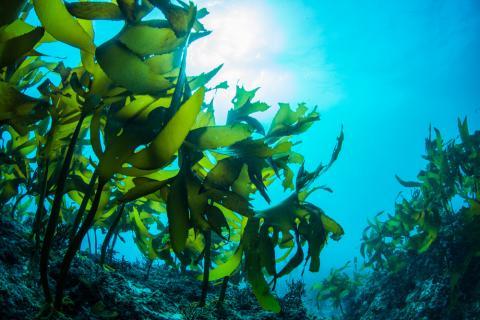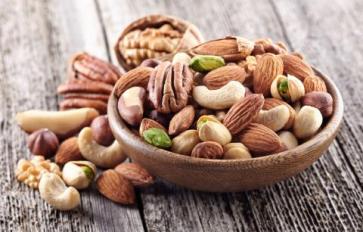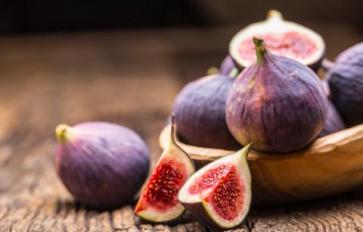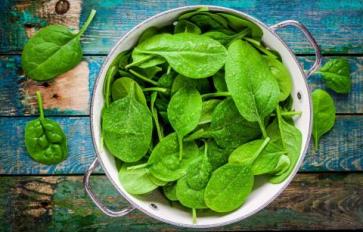
Imagine driving along the coast of California, admiring the gorgeous views and stunning beaches. You pull over, step out of the car, and smell the magical scent of fresh Pacific Ocean air. You breathe deep the ionically charged air, do a few stretches, and gather your seaweed harvesting tools and head down to the rocky beach. And your day begins for harvesting wild seaweed.
Consider this as a type of wildcrafting—only you are harvesting greens that grow in the ocean instead of on the land. Peoples around the world have been harvesting seaweeds for food, beauty products, and natural fertilizers for hundreds of years. From Asia to the United Kingdom, the Pacific Northwest to the East Coast, indigenous peoples have used seaweed as a source of mineral-rich nutrition. People living in Ireland and other UK Islands were eating seaweed way before it became fashionable in high-end sushi bars. Here are a few recipes of Irish inspired cooking using seaweed.
Today, most of us are familiar with seaweed in the form of nori rolls and lovely seaweed salads in sushi bars. We even eat seaweed and are not aware of it! Carrageenan, a common red seaweed, is used in many food products, mainly as a thickening and binding agent, and can be found in chocolate as well as toothpaste. Alginate is brown algae that is used as a thickener for water-based lotions and hand creams. Agar is red algae that is used as a food thickener. Agar can be used as a substitute for cornstarch in cooking.
What is Seaweed?
Seaweed is actually considered a type of algae and is known as marine algae. It is a non-flowering plant that is called a thallophyte. There are only two types of thallophytes: marine algae and fungi. These types of plants are different than most plants that we know, as they do not have traditional roots, leaves, and stems.
All seaweeds contain significant amounts of chlorophyll, but unlike their freshwater counterparts, spirulina and chlorella, that are dark green or blue-green, marine algae have varying degrees of color pigments—the pigments of color represent where on the tidal zone these plants grow. There are three main pigment classifications.
Brown Algae
Brown algae (class Phaeophyceae) grow in deeper waters—the less sunlight there is, the darker their color is. They tend to grow large and are often found clustered together: Think of a beautiful swaying kelp forest. There are about 1,800 different species of brown seaweeds, the most common edible being kelp, which includes giant kelp, bullwhip kelp, and sea palm. Kelps are commonly found dried or powdered and make great additions and toppings for rice bowls, salads, wraps, and even in smoothies.
Red Algae
Red algae (class Rhodophyta) are the most diverse and have over 6,500 species. Red seaweeds grow along the lower shore, and their beautiful red pigmentation masks some of the green chlorophyll color. Common seaweeds in the red category include nori and dulse. We all know nori as the tasty, briny flavor from a sushi roll. Nori is also excellent to add to miso soups, and perfect for munching on as snacks. Dulse is another common red algae and is a great addition to salads, soups, and chowder.
Green Algae
Green algae (class Chlorophyta) are beautiful, delicate seaweeds that grow under abundant sunlight and can be found growing along the upper shoreline. With approximately 1,500 species available, these plants have very high levels of chlorophyll and are often compared to land plants that have similar levels of chlorophyll. Sea lettuce, green tuft, and tubular sea hair are common sea vegetables to find. These are good to eat raw and have a delicious and distinctive sweet briny flavor. Add to salads or last minute to a miso soup.
Of course, all of these wonderful and magical sea vegetables are incredibly nutritious and are considered a superfood. They are high in iron, protein, vitamins, minerals, and dietary fiber. And they have the most amazing flavors!
How Do I Harvest Wild Seaweed?
It may seem much easier to head over to your favorite natural food store or specialty market to purchase sea vegetables. However, if you live along the California coast, wild seaweeds are very abundant. You can make a fun day at the beach productive by harvesting your own seaweed.
You only need a few tools, knowledge of the area, and a tide chart. First and foremost, think safety! As you will be harvesting along the shoreline and slippery rocks, solid footwear with excellent gripping tread is essential. Many harvesters wear high-quality booties that provide good traction and help to keep their feet warm.
California waters are quite chilly and it is recommended to wear a wetsuit if you are going to be going into any of the tide pools to harvest. You could easily slip and fall or cut yourself, so make sure you have a basic first aid kit handy and always go with someone else. Make sure the area you pick for your sea vegetable wildcrafting is clean, and away from homes, towns, and industrial areas. You want seaweeds that come from non-polluted waters.
Tools you need are quite simple and basic. A tide chart is not an option, it is a must! You will need to harvest at low tide or minus tides and you will need the chart to find out when this is. You will need a pair of very sharp scissors and/or a sharp knife. You will be harvesting live seaweed, not picking it up off of the shore or tide line, so you will need to cut them from the rocks. Buckets and bags are needed to put the cut pieces into. Several buckets or even containers with lids are helpful so that you can keep your seaweed treasures separated.
Never pull seaweeds from the rocks—always cut pieces off. You want the plant to re-grow. Cut about the top third of the plant. Don’t harvest everything in one area; pick a little here and a little there. Be respectful of all of the other living things that you step on and around.
Seaweeds have a growing season, which is usually in late summer and early fall. By wintertime, the annual varieties begin to die off and lose their nutrients and life-force. Leave those seaweeds to decay and return as nutrients for marine life.
Rinse as much of the sand off as you can, and then bring it home and set the seaweed out to dry in the sun. You can hang lines for it to dry or you can simply lay a tarp down and dry it. It should only take a few hours on a sunny day. Once dried, store in air-tight containers in a dark, cool place and enjoy for many months to come.
Is it legal to harvest seaweed in California?
Yes, it is! For recreational use in California, you are permitted to harvest 10 pounds, of wet seaweed per day. If you are selling seaweed or using seaweed products for commercial use, you must obtain a Commercial Harvester’s License. Public access beaches allow harvesting; however, steer clear of harvesting in National Marine Sanctuaries as they may have specific rules for harvesting.
How Do I Use Seaweed?
There are many resources available on how to use seaweeds. Primarily, sea vegetables are an amazing and nutrient-rich food source and should be eaten as often as you can. Eat them in sushi rolls and in soups, dried and added to rice bowls, raw in salads—the list is endless. You can add seaweed to your bath for a nice detox soak. You can make face masks, foot soaks, and kelp creams.
Seaweeds are not only a superfood that has been gracing our beautiful oceans for thousands of years, they feed a myriad of marine life, and help to keep our oceans and planet healthy. Enjoy a trip to the ocean for a delightful day of seaweed harvesting. Be responsible, be thoughtful to Mother Ocean, and reap the many benefits of seaweeds.








